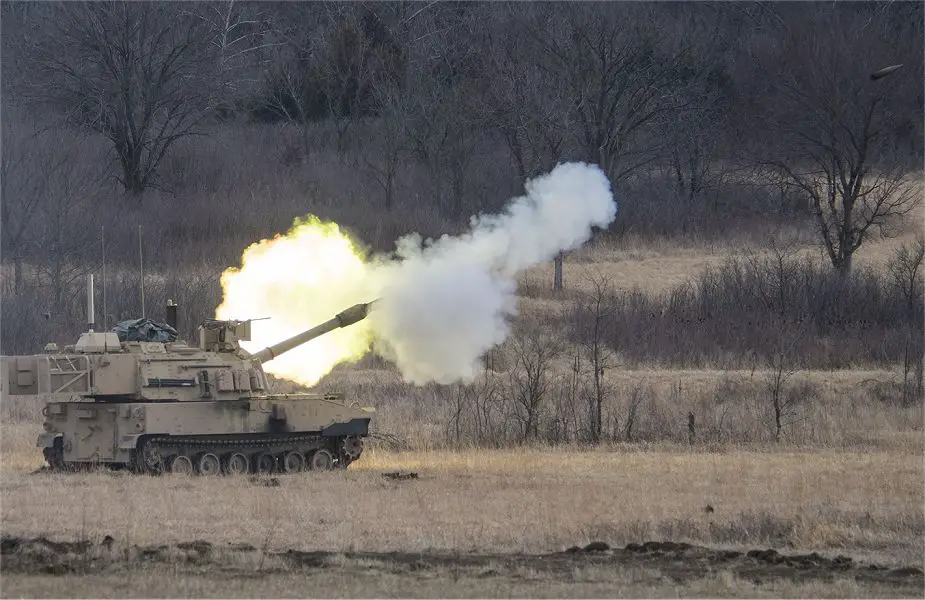Fort Riley (Kansas) is the historical home of the oldest unit of the U.S. Army, the “Big Red One”, as the 1st Infantry Division is nicknamed. The 1st Battalion, 5th Artillery Unit, is out testing their newest cannon weapon system: the M109A7 155mm self-propelled howitzer.

M109A7 Paladin fires a 155-millimeter artillery round while undergoing an Initial Operational Test at Fort Riley, Kans. (Picture source: US Army )
”We were founded on 6 January 1776. So we have quite a legacy to follow as far as the history of the battalion," explained 1st Battalion Commander Lt. Col. Richard Ikena. With their experience they are testing the Army’s newest artillery cannon system: the 155mm M109A7 self-propelled howitzer. Lt. Col. Ikena said they are taking the weapon to its limits so that its prepared for any mission: “We have a larger volume of fire than we normally do during collective training".
Staff Sergeant Richard Gartin has been in the army for nine years. "All of our training here is done with live rounds. There’s no dummy rounds or anything like that. All of the rounds and munitions of what we see here is most likely what we will see in combat, so we are ready for the fight," he said.
The M109A7 SPH Paladin 155mm Self-Propelled Howitzer is an upgraded version of the M109A6 Paladin. Like the earlier M109 models, the M109A7 Paladin is a fully tracked, self-propelled, armored howitzer.
The M109A7 Paladin configuration was achieved through modifications to earlier-built M109A2, A3 and A6 vehicle hulls, and the introduction of an entirely new cab and cannon assembly. While the vehicle's cannon remains unchanged, the M109A7 sports a brand new chassis, engine, transmission, suspension, and steering system. These components are also found on the Bradley fighting vehicles, thus increasing commonality and reducing logistical footprints and cost.
Improved survivability is also a main line of effort in the upgrade program. The vehicle also features a new 600-volt on-board power system, which is designed to accommodate emerging technologies and future requirements, as well as current requirements like the Battlefield Network.
The electronic gun drive system, which was developed for the cancelled Non-Line-of-Sight Cannon, NLOS-C, provides significant improvement to firing operations. Also, the on-board power system ensures the platform has enough SWaP-C growth potential to last until 2050.
The first prototype was revealed in 2007. Prototypes of the M109A7 began tests at U.S. Army Yuma Proving Ground (Arizona) in 2008 when the original concept demonstrator was brought out for testing. Formal developmental testing began after that.
In 2013, this artillery system was approved for production and a contract was issued to BAE Systems to upgrade first M109A6 systems to the M109A7 standard. The US Army has planned to obtain a fleet of 580 M109A7 howitzers and the same number of associated M992A3 armored ammunition support vehicles.
In April 2014, the U.S. Army received the first of the low-rate initial production M109A7. The U.S. Army awarded BAE Systems a contract option worth $245.3 million to complete the low-rate initial production (LRIP) of the M109A7 self-propelled howitzer and M992A3 ammunition carrier.















